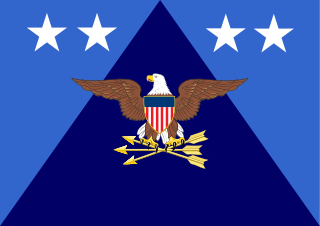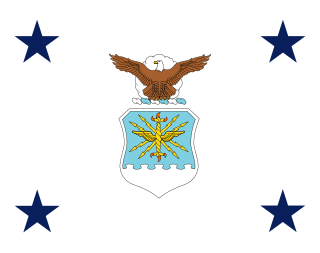Related Research Articles

The Admiralty, originally known as the Office of the Admiralty and Marine Affairs, was the government department responsible for the command of the Royal Navy first in the Kingdom of England, later in the Kingdom of Great Britain, and from 1801 to 1964, the United Kingdom and former British Empire. Originally exercised by a single person, the Lord High Admiral (1385–1628), the Admiralty was, from the early 18th century onwards, almost invariably put "in commission" and exercised by the Lords Commissioners of the Admiralty, who sat on the Board of Admiralty.

The United States Department of State (DOS), commonly referred to as the State Department, is a federal executive department responsible for carrying out U.S. foreign policy and international relations. Established in 1789 as the nation's first executive department, its duties include advising the President of the United States, administering the nation's diplomatic missions, negotiating treaties and agreements with foreign entities, and representing the U.S. at the United Nations.

The secretary of state is the head of the United States Department of State which is concerned with foreign affairs and is a member of the Cabinet of the United States. The secretary of state is analogous to a foreign minister in other countries.

The secretary of defense (SecDef) is the leader and chief executive officer of the United States Department of Defense, the executive department of the Armed Forces of the U.S. The secretary of defense's position of command and authority over the U.S. military is second only to that of the president. This position corresponds to what is generally known as a defense minister in many other countries. The secretary of defense is appointed by the president with the advice and consent of the Senate, and is by custom a member of the Cabinet and by law a member of the National Security Council.

The Department of the Treasury (USDT) is the national treasury of the federal government of the United States where it serves as an executive department. The department oversees the Bureau of Engraving and Printing, and the U.S. Mint; these two agencies are responsible for printing all paper currency and coins, while the treasury executes its circulation in the domestic fiscal system. The USDT collects all federal taxes through the Internal Revenue Service; manages U.S. government debt instruments; licenses and supervises banks and thrift institutions; and advises the legislative and executive branches on matters of fiscal policy. The Department is administered by the secretary of the treasury, who is a member of the Cabinet. The treasurer of the United States has limited statutory duties, but advises the Secretary on various matters such as coinage and currency production. Signatures of both officials appear on all Federal Reserve notes.
The United States order of precedence is an advisory document maintained by the Ceremonials Division of the Office of the Chief of Protocol of the United States which lists the ceremonial order, or relative preeminence, for domestic and foreign government officials at diplomatic, ceremonial, and social events within the United States and abroad. The list is used to mitigate miscommunication and embarrassment in diplomacy, and offer a distinct and concrete spectrum of preeminence for ceremonies. Often the document is used to advise diplomatic and ceremonial event planners on seating charts and order of introduction. Former presidents, vice presidents, first ladies, second ladies, and secretaries of state and retired Supreme Court justices are also included in the list.
The United States Secretary of Foreign Affairs was a position that existed in the United States government from January 10, 1781, to September 15, 1789.

The secretary of the Senate is an officer of the United States Senate. The secretary supervises an extensive array of offices and services to expedite the day-to-day operations of that body. The office is somewhat analogous to that of the clerk of the United States House of Representatives.
Diplomatic rank is a system of professional and social rank used in the world of diplomacy and international relations. A diplomat's rank determines many ceremonial details, such as the order of precedence at official processions, table seatings at state dinners, the person to whom diplomatic credentials should be presented, and the title by which the diplomat should be addressed.

The National Guard Bureau is the federal instrument responsible for the administration of the United States National Guard established by the United States Congress as a joint bureau of the Department of the Army and the Department of the Air Force. It was created by the Militia Act of 1903. The National Defense Authorization Act for Fiscal Year 2008, elevated the National Guard to a joint function of the Department of Defense. This act also elevated the Chief of the National Guard Bureau from Lieutenant General to General with the appointment of General Craig R. McKinley, U.S. Air Force. The National Guard Bureau holds a unique status as both a staff and operation agency.

The Office of the Secretary of Defense (OSD) is a headquarters-level staff of the United States Department of Defense. It is the principal civilian staff element of the U.S. Secretary of Defense, and it assists the Secretary in carrying out authority, direction and control of the Department of Defense in the exercise of policy development, planning, resource management, fiscal, and program evaluation responsibilities. OSD is the Secretary of Defense’s support staff for managing the Department of Defense, and it corresponds to what the Executive Office of the President of the U.S. is to the U.S. president for managing the whole of the Executive branch of the federal government.
Assistant Secretary of State (A/S) is a title used for many executive positions in the United States Department of State, ranking below the under secretaries. A set of six assistant secretaries reporting to the under secretary for political affairs manage diplomatic missions within their designated geographic regions, plus one assistant secretary dealing with international organizations. Assistant secretaries usually manage individual bureaus of the Department of State. When the manager of a bureau or another agency holds a title other than assistant secretary, such as "director," it can be said to be of "assistant secretary equivalent rank." Assistant secretaries typically have a set of deputies, referred to as deputy assistant secretaries (DAS).

The Under Secretary for Political Affairs is currently the third-ranking position in the United States Department of State, after the Secretary and the Deputy Secretary. While the positions of Secretary and Deputy Secretary are occupied by political appointees, the position of Under Secretary of State for Political Affairs is usually occupied by a career Foreign Service Officer, making the occupant the highest-ranking member of the Foreign Service. The current Under Secretary is David Hale, who assumed office on August 30, 2018.

The Under Secretary of State for Management is a position within the United States Department of State that serves as principal adviser to the Secretary of State and Deputy Secretary of State on matters relating to the allocation and use of Department of State budget, physical property, and personnel, including planning, the day-to-day administration of the Department, and proposals for institutional reform and modernization.

The Under Secretary for Economic Growth, Energy, and the Environment is an undersecretary position within the United States Department of State. The Under Secretary for Economic Growth, Energy, and the Environment serves as senior economic advisor at the State Department and advises the Secretary of State on international economic policy and is often referred to as the senior economic diplomat of the United States. The Under Secretary also leads the work of the Department on trade, agriculture, aviation, and bilateral trade relations with America's economic partners.

The Under Secretary of Defense for Personnel and Readiness, or USD (P&R), is a high-ranking civilian position in the Office of the Secretary of Defense (OSD) within the United States Department of Defense responsible for advising the Secretary and Deputy Secretary of Defense on recruitment, career development, pay and benefits, and oversight of the state of military readiness. The Under Secretary is appointed from civilian life by the President and confirmed by the Senate to serve at the pleasure of the President.
Executive Schedule is the system of salaries given to the highest-ranked appointed officials in the executive branch of the U.S. government. The president of the United States appoints individuals to these positions, most with the advice and consent of the United States Senate. They include members of the president's Cabinet, several top-ranking officials of each executive department, the directors of some of the more prominent departmental and independent agencies, and several members of the Executive Office of the President.

The Under Secretary of the Air Force is the second-highest ranking civilian official in the Department of the Air Force of the United States of America, serving directly under the Secretary of the Air Force. In the absence of the Secretary, the Under Secretary exercises all the powers and duties of the Secretary and serves as Acting Secretary when the position of Secretary is vacant. The Under Secretary of the Air Force is appointed by the President, by and with the advice and consent the Senate.

The Department of the Permanent Secretary also formally known as Department of the Permanent Secretary to the Admiralty or Department of the Secretary was the Civil Service department responsible for the control, direction and guidance of all administrative functions of the British Admiralty from 1702 to 1964, it was headed by the Permanent Secretary to the Admiralty.

The Navy Office was the government office charged with responsibility for the day-to-day civil administration of the British Royal Navy from (1576-1832). It contained all the members of the Navy Board and various other departments and offices. The day-to-day business of the Navy Office was administered by Clerk of the Acts from 1660 until 1796, who was responsible for the organisation of the office and management of its staff. When his office was abolished his duties were assumed by separate committees for Accounts, Correspondence, Stores, Transports and Victualling who were, in turn, presided over by the Comptroller of the Navy until 1832. It was one of two government offices that were jointly responsible for directing naval affairs. In 1832 following reforms of the naval service the Navy Office was abolished all of its functions and staff were merged within the Admiralty.
References
- Office of the Historian, Bureau of Public Affairs. "Chief Clerks". Department of State. Retrieved September 26, 2011.
| This United States government–related article is a stub. You can help Wikipedia by expanding it. |